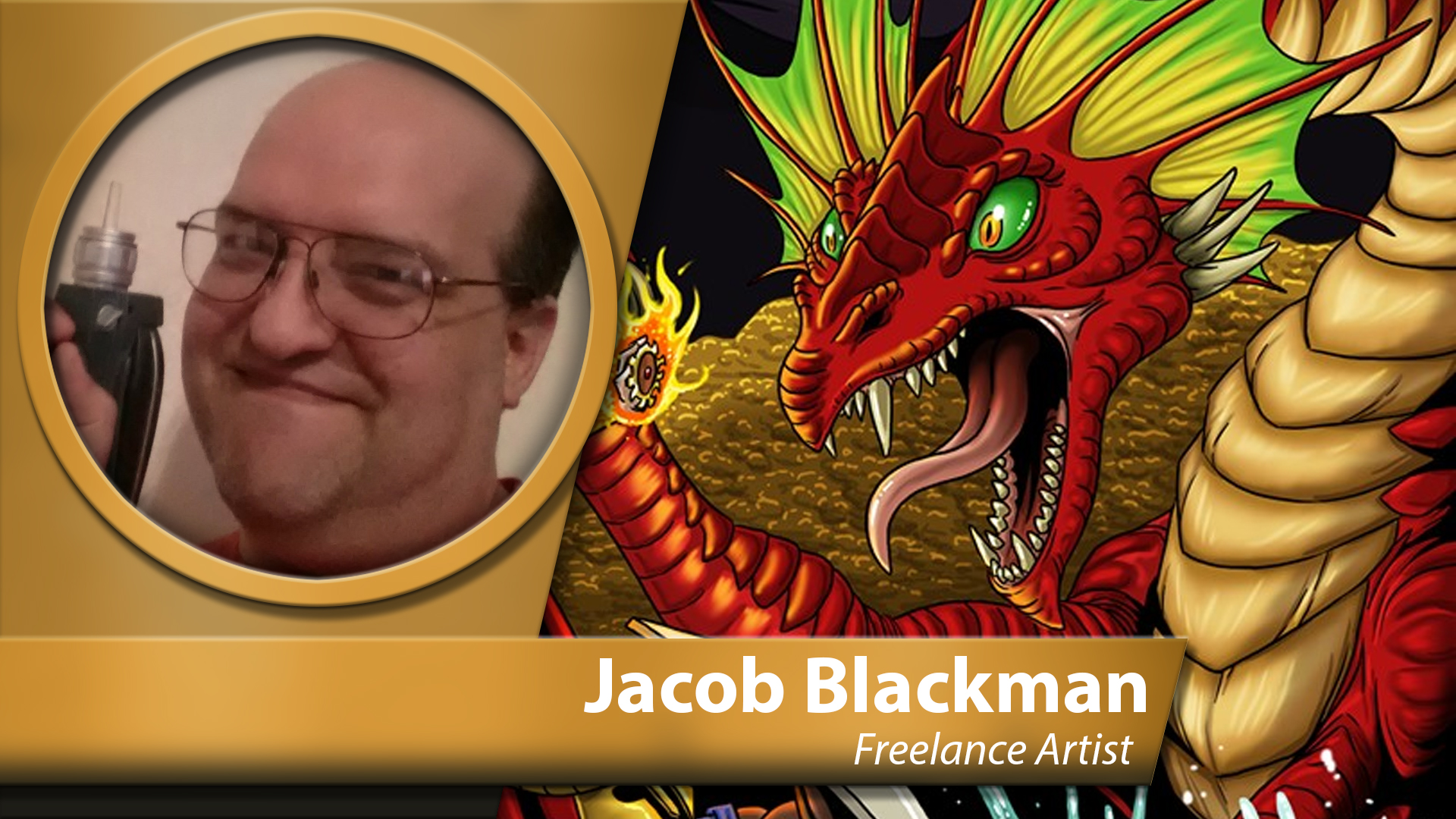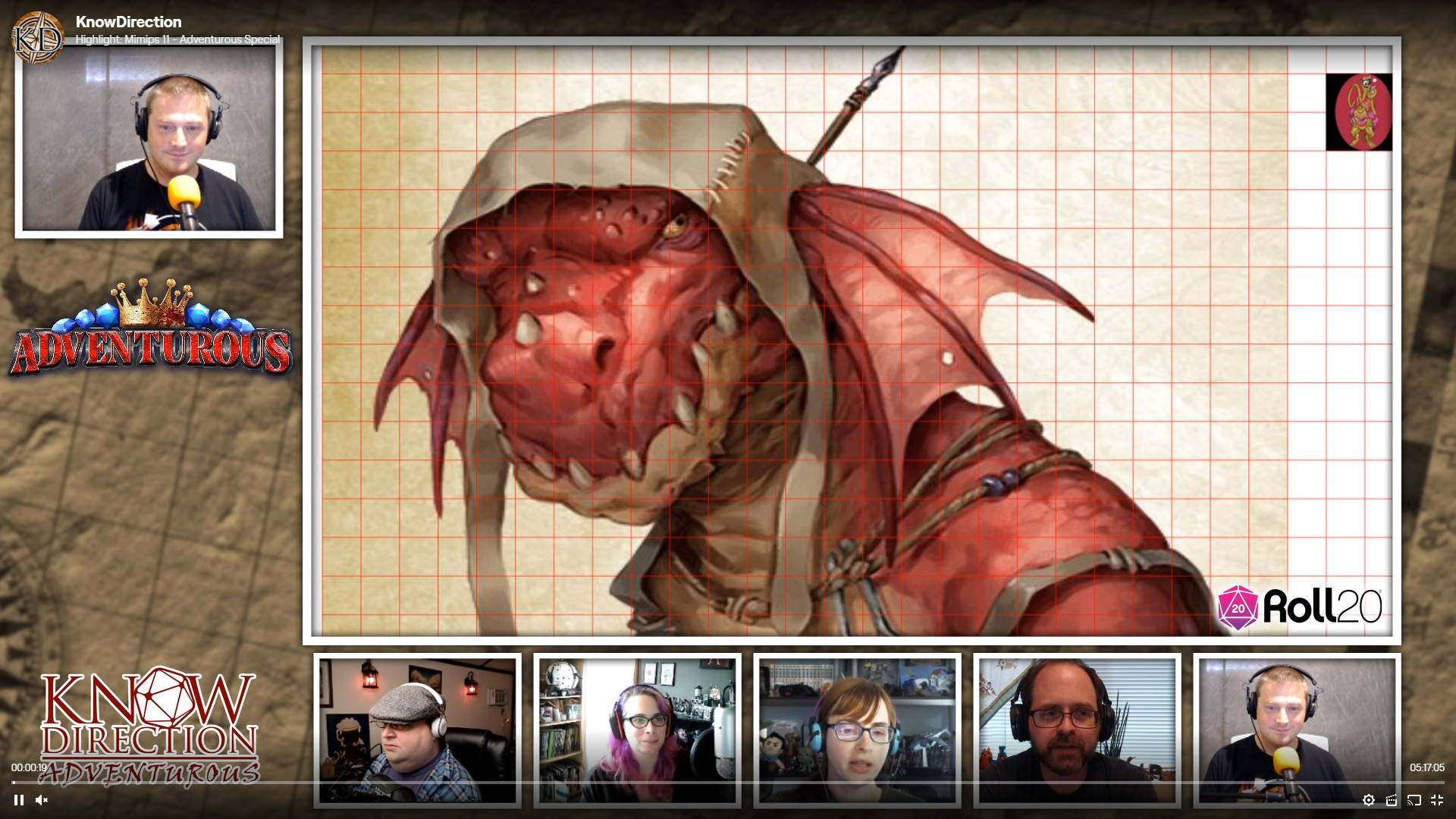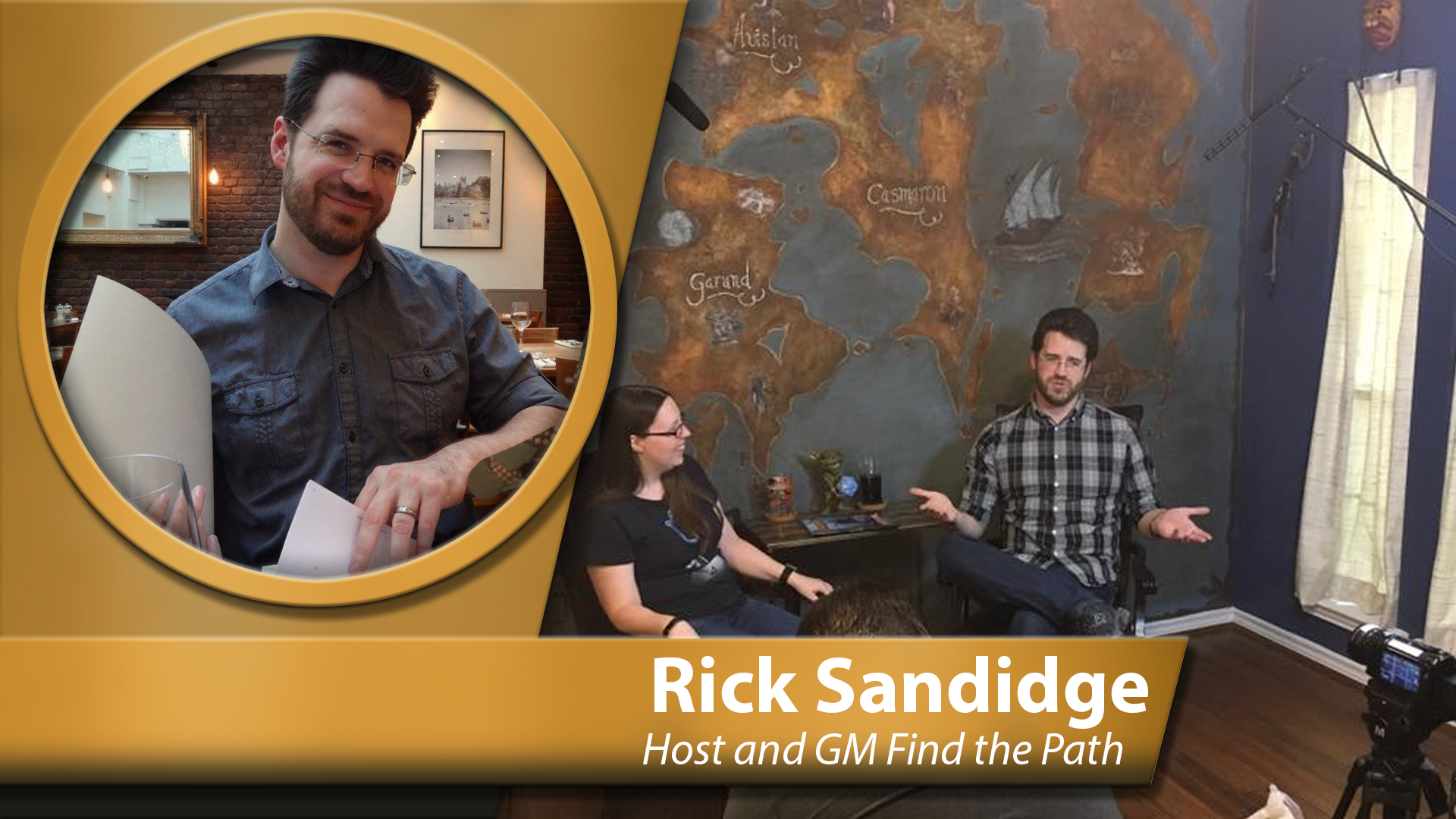By Jacob E Blackmon
The tabletop game industry values its writers and editors to a great degree. And that’s perfectly understandable. Without their words, our games – perhaps our entire hobby – would not exist. But what attracts a potential gamer to pick up that shiny book or boxed set? What entices them to know what is between the covers of this strange game? It’s that beautiful art on the cover! And it means more than most people give it credit.
And who has to create that art? It doesn’t just appear out of nowhere. Well, that’s where people like me come in. I am a freelance artist. And I work almost exclusively in the tabletop rpg industry.
This was not a job I was expecting to get. Nor one I actively sought out. As a youth, I wanted to be a comic book artist, and draw superheroes for the rest of my adult life. Although I was a HUGE gamer as a teen, it seriously never dawned upon me to seek out a career in the gaming industry. The style of art I used – that of a traditional comic book artist – was so different from the painted style of tradition rpg artists, like Larry Elmore, Clyde Caldwell, and the like.
But here I am, making a full-time career of illustrating for the hobby I love. And I have learned a LOT of what it means to live in this industry as an artist and how to survive. I hope that my knowledge – limited though it may be – will help others who want to join the ranks of my august profession.
The obvious joke would be to say: “DON’T!” But I am not that negative. I want to encourage more artists to follow their dreams. Unlike many other artists I know, who’s parents were less than supportive of their artistic skills, MY parents seriously encouraged me to follow my artistic dreams. And I want to share that encouragement with others. So… DO IT! Get your butt in gear and start drawing for the games you love.
Just be aware… it is a long and difficult process to get to the point even where I find myself. So please, let me help you along.
RULE ONE: Establish Your Credentials.
First of all… make sure your art is online. If you don’t have your own website, it is not a big deal. Tons of artist use established websites like DeviantArt. It’s free and easy to use. Make sure you post your art regularly.
When I was just starting in my career in 2007, social media was BRAND NEW! I know it seems second nature in our modern world, but when I was getting my start, it was not even a part of my world yet. After I got my first several pieces published, I was informed by one of my successful rpg writer friends that I would NEED a social media presence. And, let me tell you, it made the difference. I signed up to Facebook and Twitter, and the work started flooding in! And with all of these new projects, I had to figure out something quick…
How much did I charge for my work? Previous to this, I was producing “a piece of art” for $25 each. I made no distinction between a piece of art that had a single character on it or what might be a giant, complicated cover illustration. This was a serious mistake on my part. I quickly learned that I needed to establish my rates based on the amount of work I was being asked to create. So… know your rates. Know what your time is worth. And, more importantly, make a rate sheet that can easily be shared on social media of via an email.
Speaking of which…
RULE TWO: Be a Professional!
This is not the last time I will say these words: despite being a freelancer, you should always treat your job… LIKE A JOB! This is how you are going to make your money. And if you do not act as a professional, you will find yourself no longer getting work.
How do I act like a professional? Well, now that you’ve established your social media presence and rates for your work, you need to start working. And if you want to know who to work with, you will need to know the people in the rpg industry.
What?
Yeah! You have to care about the who’s-who of rpgs and know what they write, what they enjoy, and what kind of art they like. Do you know who Kenneth Hite is? How about Robin Laws? How about Jolly Blackburn, BJ Hensley, Owen K.C. Stephens, Rachel Ventura, Monte Cook, or Wolfgang Baur? These are just some of the need-to-know names in the industry. And that’s just barely scratching the list. These are the writers and producers of rpg games who you might be working with. It is important to know what kind of games they produce. And based on that information, you can provide them with the art they will enjoy.
Once you know who you might want to work with, be prepared to work with other people… people whom you’ve never even heard of before. But it’s still work to be taken seriously.
Next, get out there and hustle! Do not think that just because you post a couple of beautiful pieces of art on social media and say “I’m available for commissions” that people will just line up to give you work. Oh no… you have to go to them! Send out an email… not a mass email… one that is individually produced for each different company. Provide links to your artist website or portfolio, and provide contact information: email, social media links, phone number, etc. This will go a long way to letting them know you are willing to do the work, as you are willing to put in some extra time for a simple email. It’s like a job hunt!
Finally, once you have work… do it! Do. Not. Procrastinate.
The way I got my reputation in the rpg industry… was taking the jobs of procrastinators. They would put off a job until the very last minute. And I mean BIG JOBS! This was often eight to twelve pieces of art for a single supplement. I was asked to produce the art… often with only one week (or less!) to turn over finished pieces. And I did it. Again and again! To this day, I can count on two fingers how many jobs I have come in passed the established deadline.
If you always turn in your art on time – or better yet, AHEAD of time – you will be an artist your customers come back to again and again. If not, I will gladly swoop in a take your job.
Trust me… I will.
Communication with your customer is important at every step of the art process. When I create a rough draft, I share it to make sure this is what the customer wants. Once the rough draft is approved, I move on to a cleaner line work… and share it again to make sure it still looks right. The last thing you want to have happen as an artist is to create a full and complete illustration only to turn it in and then have the customer make tons of changes. So make sure you are getting professional feedback at every stage of the illustration process. Yes, this will sometimes slow a project down, as you are waiting for a response, but them’s the breaks.
RULE THREE: This Is Your JOB!
So, like I said before… treat it like a job.
I am familiar with a number of freelancers who live a party lifestyle and do work in… what is it called… “free time?” I wonder what that is. I also know some freelancers who literally work themselves to death. All they do is get up from bed, draw, draw, draw, the go back to bed.
These are both terrible things to do to yourself. This is your job and it should be treated as such. Have a routine. Get up in the morning. Shower. Eat breakfast. Watch the news. Then sit down and start your art day. After two hours, take a short break. And during this break, DO NOT STAY AT YOUR COMPUTER OR ART TABLE! Stand up, walk around. Get the blood flowing through your body. Then get back to work for another two hours. Take a break for lunch. Then work another couple of hours. Until you’ve had a full 8-hour work day. And then… the rest of the day is yours!
Treat it like a job!
Given that being an artist, like many modern “desk-jockey” jobs is very sedentary, one should be careful about adopting unhealthy mannerisms. And I say this as someone who does not take their own advice. Since becoming a full-time freelance artist, I have put on much more weight than I care to mention. So stand up… exercise.. eat as healthy as you are able. Take care of yourself.
The point is that you should not work yourself to death. Make sure you have plenty of free time for yourself to enjoy life. You should have a nice balance of work time and personal time.
RULE FOUR: Don’t Get Complacent
Just because you’ve finally made it as an artist, does not mean you are done. Now is time to evolve!
What?
Trust me on this. You should see that art I was producing when I first started in the industry compared to what I can do now. Evolution of style and tolls is going to be important to your career.
First of all, you are going to want to cultivate a variety of different styles of art. This way, you can produce work for a larger client base. If all you know how to do is realism, then you won’t be getting any calls from people who might want a cartoonish style for their children’s book or game. So make sure you can produce art is different styles and appearances.
Evolve your tools. When I started rpg illustration, I was using pencils and paper. I had to scan in my art on computer and email that to my clients. Now… I have one of those digital art tablets. And trust me. Those things make a HUGE difference in what I am able to do with my work. If you are lucky enough to be able to afford one, I highly recommend it. There are a variety of companies that produce them, and some are more affordable than you think.
Speaking of affordability, you should manage your finances… like a job! Unlike a standard job, where they take the taxes out of your paycheck, you have to save up for tax time and do that work yourself. Or, if you are like me, get yourself an accountant to help you keep track of things. The point is that every time you get one of those nice payments for your art, you need to take one-third of that money, put it aside in a savings account… and DON’T TOUCH IT! The IRS will be by in April to come and take their share.
On the subject of finances, this career has times of ups and downs. Freelancers call this “feast” and “famine.” When we get lots of work coming in regularly, and the money is flowing into your bank account, everything is wonderful. But then there are going to be entire months at a time (for me, this is often between Halloween and New Years Day), where it seems that no one is willing to give you any work. So again, you want to save up your finances for times like this, when the work is scarce and the money is not coming in.
Times like this will try your patience. But it will eventually swing back to your favor eventually. As long as you’ve done your best to maintain your professionalism and good-will towards your clients and customers.
One final piece of advice, from one artist to another… when going to conventions where you know you will be meeting your customers face-to-face, make sure you are showered, clean, and well-dressed. Personal appearance goes a long way to maintaining that professional image we want to cultivate. A simple button-down shirt – even one that has dragons and superheroes on it – is much better to be seen in than a standard black t-shirt with a gamer logo or comic book character on it. Then you just look like everyone else at the con. You want to stand out and be remembered.
So, that’s all the advice I have to give. Go and make you art dreams come true. I hope we have the chance to work on a project together someday.
ABOUT JACOB BLACKMON
Jacob E. Blackmon was born in California, where he studied art – which is to say, he read a lot of comics and RPG game books and created art based on the things he loved. He now lives in Oklahoma (for some reason) and spends even more time drawing, playing games, and watching movies to fuel his addled imagination.
Jacob has worked as a freelance artist for over ten years, working with companies such as AAW Games, Fainting Goat Games, Misfit Studios, and Rogue Genius Games. He had dipped his toes in writing with the sourcebooks ‘Lunar Knights,’ ‘Starfarer Adversaries,’ and ‘Super Powered Bestiary.’ Jacob’s current project is the ‘Super Powered Legends’ series for the Mutants and Masterminds RPG.
A collection of Jacob’s work can be found at prodigyduck.deviantart.com
Support Jacob here: patreon.com/jacobblackmon







